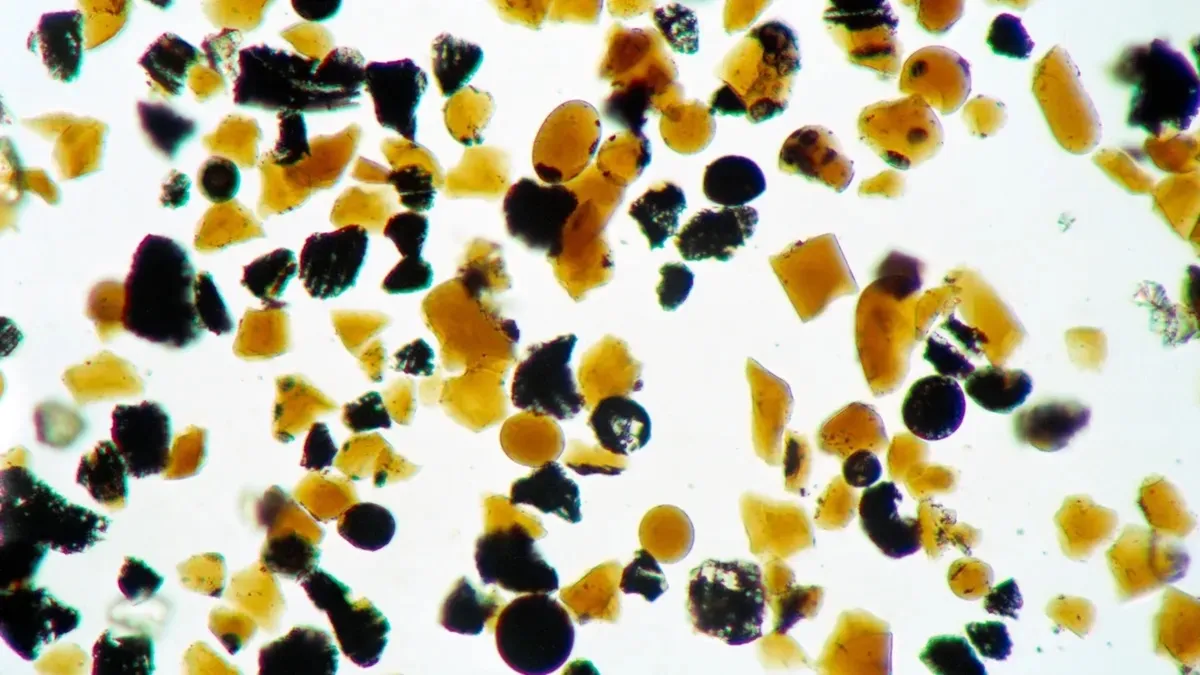
When the Apollo astronauts first set foot on the lunar surface, they anticipated encountering grey rocks and dust. However, what they discovered was nothing short of extraordinary: tiny, brilliant orange glass beads scattered across the Moon's landscape, resembling microscopic gems. These beads, each smaller than a grain of sand, serve as ancient time capsules, revealing the Moon's volcanic history from billions of years ago.
The formation of these lunar glass beads dates back approximately 3.3 to 3.6 billion years during a period of intense volcanic activity on the then-young satellite. The story behind these beads begins with explosive volcanic eruptions that would have been a spectacular sight. These beads were created when lunar volcanoes propelled material from the Moon's interior to the surface, where droplets of lava solidified instantly in the cold vacuum of space.
Imagine volcanic eruptions akin to Hawaii's famous lava fountains, but occurring in an airless environment. Without an atmosphere to hinder their formation or weathering to erode them, these tiny glass spheres have remained remarkably pristine for over three billion years.
For fifty years, these unique lunar samples sat in laboratories, waiting for technological advancements to catch up with scientific curiosity. Recently, researchers have made significant strides in analyzing these lunar glass beads using advanced microscopic techniques that were unavailable during the Apollo era. The research team employed cutting-edge tools, including high-energy ion beams and electron microscopy, to examine the beads without causing damage.
They took meticulous precautions to protect the samples from Earth's atmosphere, which could alter the ancient minerals present on their surfaces. This careful analysis allows scientists to gain insights into the Moon's volcanic past and the conditions that shaped its geological history.
What makes these glass beads particularly valuable from a scientific perspective is their diverse colors and compositions, which narrate different chapters of the Moon's volcanic story. Some beads exhibit a shiny orange hue, while others are glossy black, with each variety revealing information about distinct types of eruptions that occurred over millions of years.
The minerals and isotopic composition on the surfaces of these beads act as probes into the different pressures, temperatures, and chemical environments present during lunar eruptions 3.5 billion years ago. Researchers discovered that the style of volcanic activity evolved over time, providing critical insights into the Moon's internal development.
As researcher Ogliore poetically described, analyzing these glass beads is akin to reading the journal of an ancient lunar volcanologist. Each tiny sphere is imbued with clues about the conditions deep within the Moon during a formative era when our solar system was still young and dynamic.
These lunar glass beads serve as a poignant reminder that the Moon wasn't always the silent, inactive body we observe today. Billions of years ago, it was a geologically vibrant place, marked by explosive volcanoes that created these beautiful, microscopic windows into lunar history. As researchers continue to study these beads, they unlock secrets that enrich our understanding of the Moon and its evolution in the cosmos.